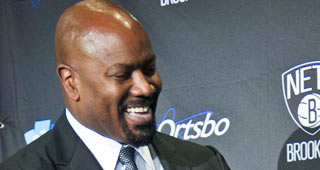At the end of my Shaun Livingston piece, I put in a little footnote that had a mistake a reader thankfully pointed out. As a CBA nerd, when something like that happens I try to write it out so that hopefully others do not fall into the same pit down the line.
In the case of Shaun Livingston, it came in the minefield of sign-and-trades. At their most basic, the concept for a S+T deal is easy to grasp: the trading team must be able to sign the player to that contract and the acquiring team has to be able to receive it.
We end up focusing most of the time on the team getting the signed and traded player because there are different and more commonly used restrictions on that part of the transaction. The receiving team must be able to fit the contract in using cap space, a trade exception, or an appropriate amount of salary going back to the trading team. In addition, under the current CBA only teams under the luxury tax apron can acquire a player using a sign-and-trade with doing so carrying the added effect of hard capping that team at the apron for the rest of the league year.
This happened to the Warriors last season when they ended up adding Andre Iguodala from Denver with a sign-and-trade to retain their other exceptions.
The part of these transactions that gets far little attention focuses on the team that has to sign and then trade their player. In many circumstances, this does not get discussed because it happens pretty easily. Most of the high-end players in the league do not get into situations where this becomes relevant but we can see in this case how this strange situation can come to pass.
The easiest way to think about how a team would be unable to sign their own player to a contract is through a series of negatives:
1. They cannot have enough cap space to sign him- This one is easy. If the team has the space to sign the player outright, this part of the trade happens painlessly. In this case, the Nets are miles over the salary cap.
2. They do not have full Bird rights- There are different levels of Bird rights (Non-Bird, Early Bird, Full Bird) that all have different rules and privileges. If a player has played for three seasons with the same team without clearing waivers or changing teams as a free agent, the team has full Bird rights so they can go over the cap and tax to sign him. In this case, Livingston signed with the Nets as a free agent before the 2013-14 so he is a non-Bird free agent for them. Note that because the CBA is evil, the non-Bird status is a form of Bird rights- the team just has less flexibility than the other forms.
3. The team cannot pay the salary using an exception- This has a few different components. First, the salary has to be higher than the team can pay using an exception. In this case, Livingston is signing for more than 120% of his 2013-14 salary so the Nets cannot use his “Non-Qualifying Veteran Free Agent” (non-Bird) status. In addition, the reports are that the Warriors want to sign him to the full non-taxpayer Mid-Level Exception. Since the Nets are over the apron, they only have the taxpayer MLE available and thus cannot sign him to a contract at that value using their MLE.
In these circumstances, the original team cannot sign the player to the contract he agreed to so the transaction must occur as a straight signing. Unfortunately for the Warriors, that limits their flexibility somewhat because using part of their huge trade exception would have allowed them to have their Mid-Level to use for one or more free agents. Instead, it just becomes another interesting lesson about an intricacy of the CBA.



